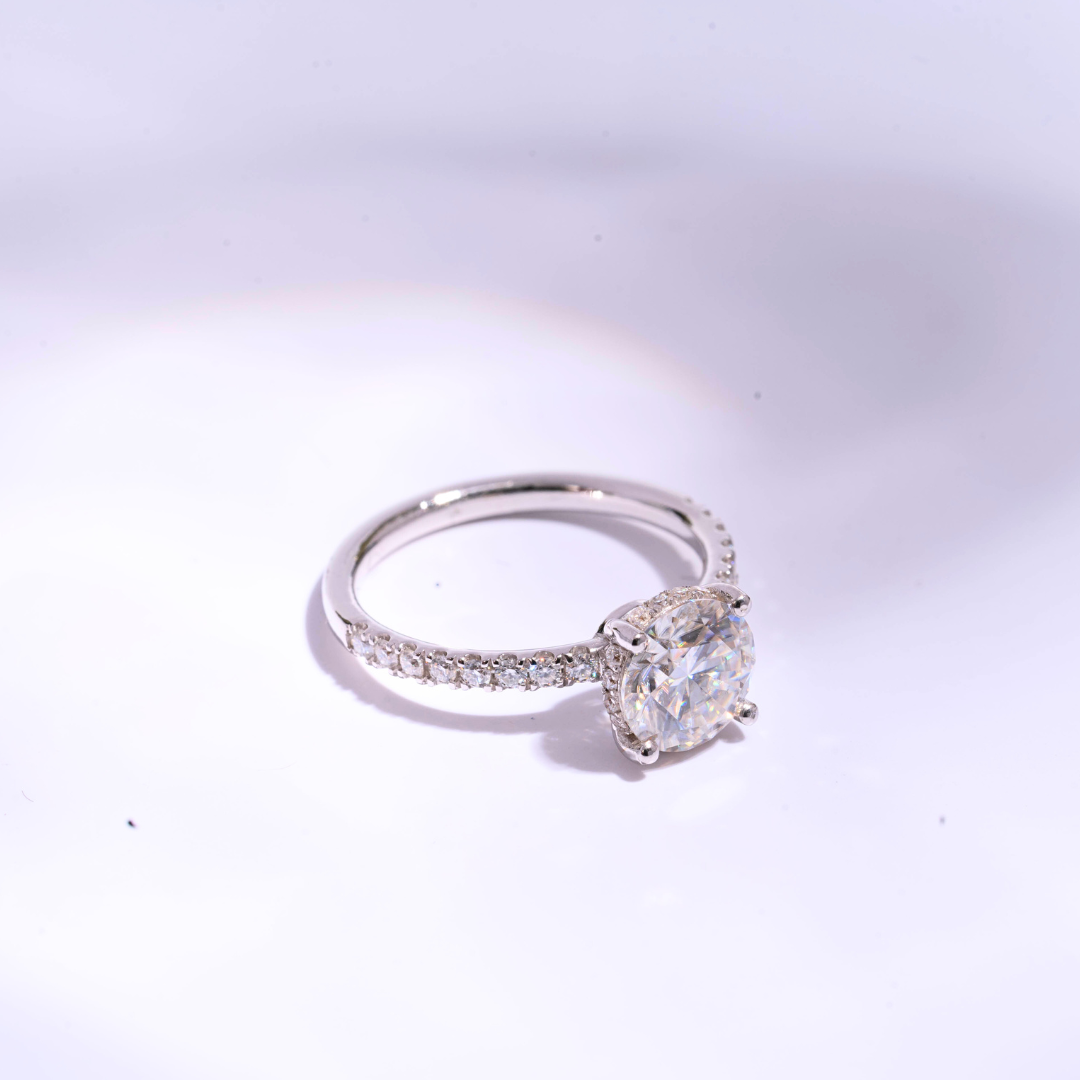
Lab Diamonds vs Moissanite vs Natural Diamonds: Expert Answers to Your Top Questions
Share
At Vai Ra, we believe jewelry shopping should be transparent and empowering. Whether you’re buying your first diamond ring or upgrading your daily jewelry, it’s important to understand your choices. That’s why we’re breaking down everything you need to know about lab-grown diamonds, moissanite, and natural diamonds — from sparkle to certification to value.
Why Are Diamonds So Expensive?
Natural diamonds are mined from deep within the earth, making them rare and resource-intensive. This scarcity drives their high prices.
Lab-grown diamonds, however, are created in advanced labs that replicate the same conditions under which natural diamonds form. They are chemically, physically, and optically identical to natural diamonds — but are far more affordable.
Moissanite is a distinct gemstone known for its fiery brilliance and affordability. While it’s not a diamond, it offers unmatched sparkle and durability, making it a popular alternative.
Does Moissanite Lose Its Sparkle Like CZ?
No — moissanite does not lose its shine. Unlike Cubic Zirconia (CZ), which can cloud or scratch over time, moissanite is extremely durable and maintains its brilliance for life.
On the Mohs hardness scale, moissanite scores 9.25, second only to diamond (10). This makes it an excellent choice for everyday jewelry.
Can You Tell the Difference Between Lab Diamonds and Natural Diamonds?
To the naked eye, lab and natural diamonds look exactly the same. Even professional jewelers cannot differentiate without advanced lab equipment.
Moissanite, on the other hand, has a slightly different sparkle. It gives off rainbow-like flashes compared to a diamond’s white brilliance. Some people love this unique look, while others prefer the traditional diamond sparkle.
What Should You Look for When Buying Diamond Jewelry?
- Check Hallmarking → For gold jewelry, always ensure it carries the BIS Hallmark (mandatory in India).
- Insist on Certification → For diamond jewelry, ask for certificates from reputed labs like GIA, IGI, or SGL.
- Focus on the 4Cs:
-
- Carat → Weight of the diamond.
- Color → Most lab diamonds fall in the premium D–F (colorless) range.
- Clarity → Choose higher clarity for sparkle and durability.
- Cut → Impacts brilliance the most — always look for Excellent/Ideal cuts.
Are Diamonds a Good Investment?
Contrary to popular belief, diamonds are not an appreciating asset. While gold has resale value, both natural and lab diamonds depreciate once purchased.
- A natural 1 ct diamond bought for ₹2,00,000 may resell for ~₹80,000.
- A lab 1 ct diamond bought for ₹60,000 may resell for ~₹20,000.
👉 You actually lose more money on natural diamonds compared to lab diamonds. That’s why we recommend buying diamonds for their beauty and emotional value, not as an investment.
Jewelry Trends Today
Modern women are embracing everyday fine jewelry that combines comfort, elegance, and practicality. Popular styles include:
- Solitaire studs
- Minimalist rings
- Tennis necklaces & bracelets
- Piercing jewelry (helix, cartilage, etc.)
Heavy traditional jewelry remains important for weddings, but lightweight daily wear pieces are driving new trends.
How to Choose Jewelry for Daily Wear
- Look for balanced designs — not too thin, not too bulky.
- Ensure secure settings so stones don’t fall out.
- Choose durable metals like 18kt gold.
- Opt for comfort-first designs, especially in earrings and rings.
At Vai Ra, we craft jewelry that balances heritage and modern love — designed for today’s woman who values both tradition and individuality. Whether you choose a natural diamond, lab-grown diamond, or moissanite, we help you find a piece that feels truly yours.
Browse our collections: www.vaira.co.in
Frequently Asked Questions
Are lab-grown diamonds real diamonds?
Yes. Lab-grown diamonds are chemically, physically, and optically identical to natural diamonds. The main difference is origin: lab diamonds are created in controlled environments while natural diamonds are mined.
Is moissanite better than diamonds?
Moissanite isn’t "better" or "worse"—it’s different. Moissanite offers intense brilliance and is highly durable at a lower price point, but it is a distinct gemstone and not a diamond.
Which is best for daily wear: lab diamond, moissanite, or natural diamond?
All three—lab-grown diamonds, natural diamonds and moissanite—are durable enough for daily wear. Choose based on your budget, aesthetic preference, and whether you prioritise origin or maximum brilliance.
Will moissanite lose its sparkle over time?
No. Unlike cubic zirconia, which can cloud or scratch, moissanite retains its brilliance and is highly scratch-resistant—making it a great option for everyday jewellery.
Do lab diamonds hold value over time?
Like most diamonds sold in retail jewellery, lab diamonds generally depreciate after purchase and are not a reliable financial investment. Buy them for beauty and emotional value, not resale.
How can I make sure a diamond is authentic?
Always request a certificate from a reputable gemological lab (GIA, IGI, SGL) and buy from trusted jewellers. For gold, confirm BIS hallmarking where applicable.
